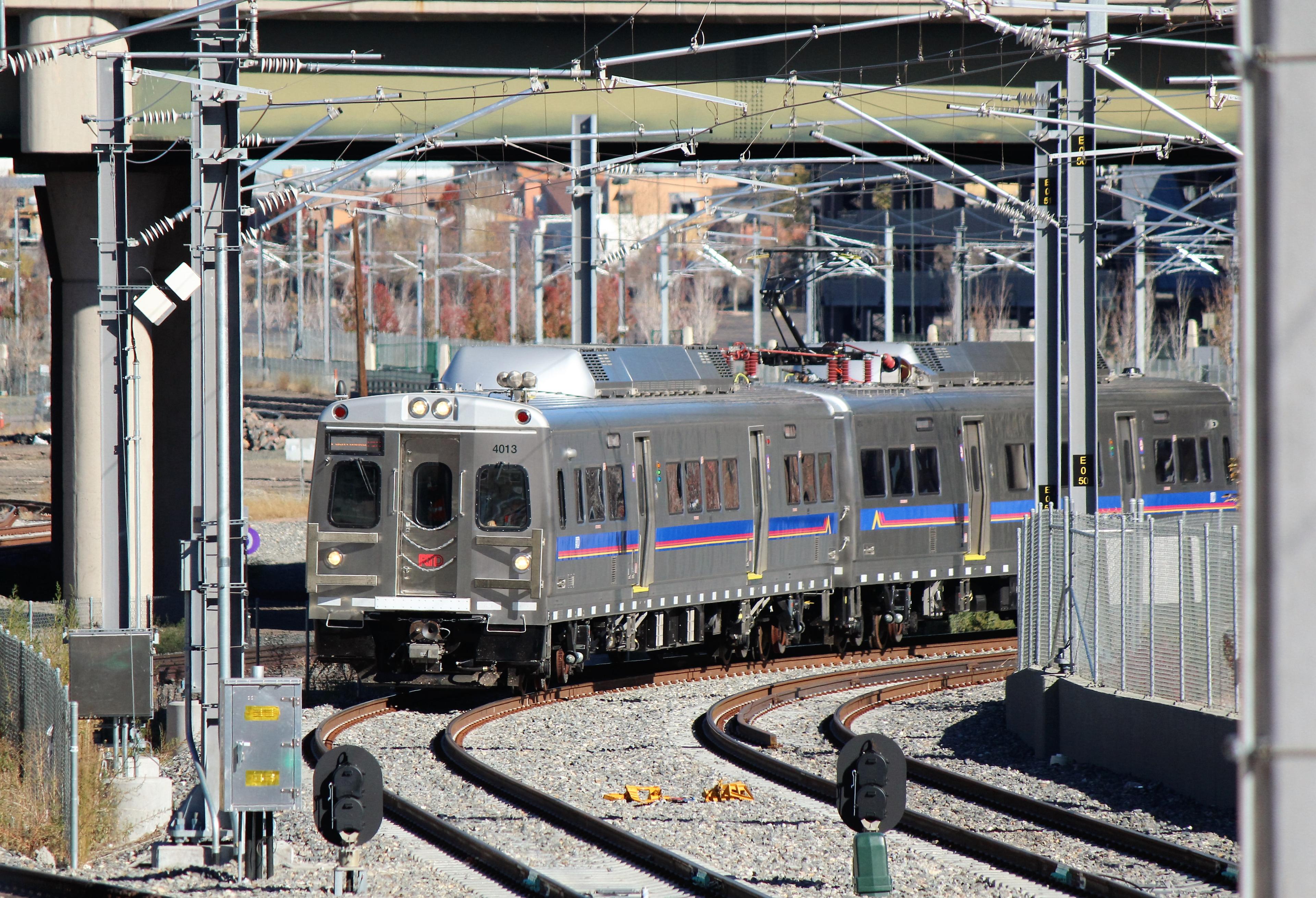
The problems started at 3:47 p.m. on April 20, when an RTD A Line train traveling from Denver International Airport to Union Station damaged part of the overhead system that powers the line.
Fourteen minutes later, a second train hit the damage near the 61st and Peña Station and slowed to a halt. The train’s control center assumed the problem was a train issue, not a track issue. So a third train was sent to be a “rescue train,” before it got stuck as well. The two disabled trains, which held some 200 people, would sit there for more than three hours.
"At first, people were pretty patient and understanding," passenger Chris Jones told CPR News by phone about halfway through the ordeal. "And now, we're all pretty hungry and frustrated and wishing we were not here."
Jones and his fellow passengers would wait another hour before being rescued. Nearly a month later, an internal RTD document obtained by CPR News under the Colorado Open Records Act details how the trains became stuck, how the response was handled, and what will done to prevent similar incidents in the future.
The document is similar to a presentation that executives from the A Line’s operator, Denver Transit Partners, are set to give to RTD’s board of directors in a public meeting 5:30 p.m. Tuesday. RTD asked for the presentation because, as spokesman Scott Reed told the Denver Business Journal, the April 20 incident damaged RTD’s reputation.
“It’s diminished trust and caused concerns over what happened,” Reed told the newspaper.
Those concerns appear to be justified. RTD’s report shows that a key protocol was not followed. Supervisors responding to the incident did not have copies of the “rescue of a disabled train” procedure. All supervisors have since been reissued the procedure and are required to carry it when they are in the field, the report says. The second train could have been rescued an hour earlier, the report states, if a second supervisor had been sent out. More training is planned as well.
DTP’s own presentation faults its response to the incident, especially how it communicated updates. Several passengers on the disabled trains told CPR News their only consistent source of information was RTD’s Twitter account. ”Communications directly with passengers on the failed trains, with other passengers on the line, and with RTD was disjointed, unreliable, and inaccurate at times,” DTP’s presentation says.
The A Line had run relatively well in recent months after a rocky start in 2016 that earned the train a reputation for breaking down. DTP emphasizes that its recent on-time performance is over 95 percent, and Reed says RTD is happy with the train’s operation.
And some affected passengers appear to be willing to give RTD’s premiere train line another chance. James Drury, a passenger on one of the disabled trains in April, said he won’t hold the incident against RTD. "I do quite a bit of traveling for work. And honestly, this is the first time I've ever had issues with the A Line,” he said.








